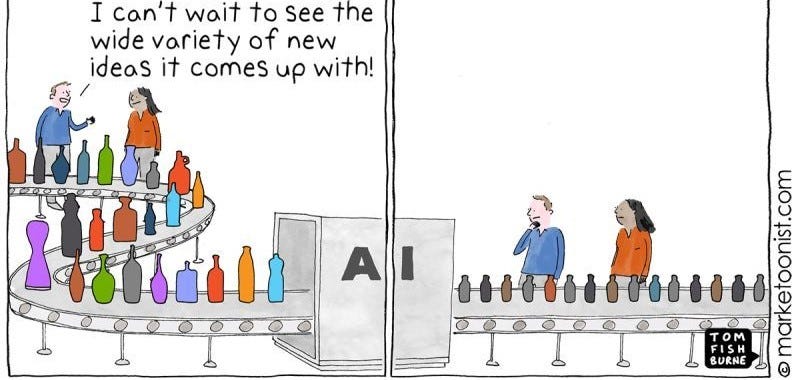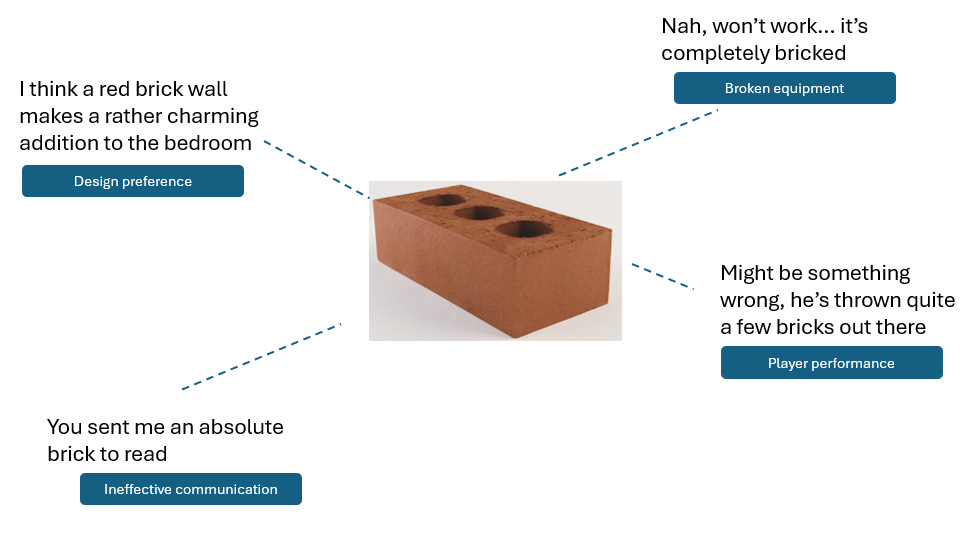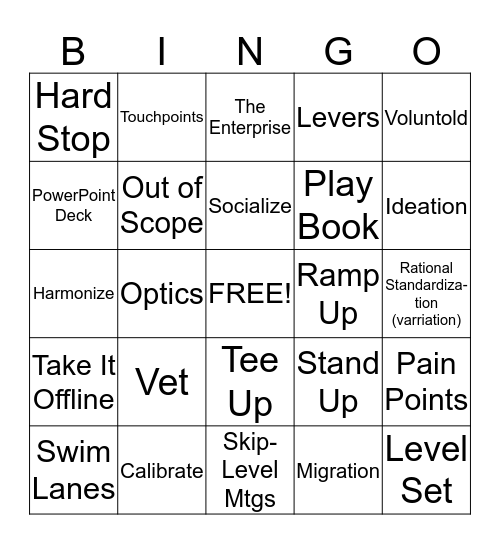I want to break free... from obvious insights
How can AI (genuinely) drive strategic thinking?
The Problem with "Safe" Strategic Thinking
Most strategic insights aren't insights at all.
They're obvious conclusions dressed up in management speak. Buzzwords that tell people what they already know. "Customer service needs improvement." "Digital transformation is crucial." "Culture change takes time."
If that doesn’t sound familiar, check your LinkedIn feed…
The issue isn't just that these insights are dull—it's that they're harmful. They reinforce assumptions, validate simple biases, and worst of all, they waste precious time that could be spent uncovering truly game-changing nuggets.
And here's the kicker…
Basic AI analysis could, will make this issue worse.
Asking a generic LLM/Chatbot to analyse interview transcripts will simply give you the most common themes, frequently mentioned challenges, and most obvious connections.
In other words, more of the same safe, predictable "insights" that don't drive real change. Just check your LinkedIn feed…
What If AI was used to do the opposite?
I was recently asked…
“How can we use AI during discovery and analysis to help us see what is missing? Not just confirm what is obvious…”
I.e.,
Highlight contradictions and variants, not just smooth over them
Surface the meaningful outliers, not just recall the most common patterns
Retain nuance in summarising, not abstract to blandness
This isn't wishful thinking.
But it requires a shift in thinking.
“AI is not magic… You need to play a role.”
”It is a 'thing labeller' that is great at probabilistic pattern finding... use when the problem to solve is so intricate you can’t solve it by defining the solution in code“
Cassie Kozyrkov, ex-Chief Decision Scientist, Google
For us in Discy… that problem is the act of reading through reams of text to pull out all the nuggets you need for your analysis and findings.
Our bet is partnering expert knowledge workers with a semantic text classifier.
A tool to scale their unique ability to find nuanced meaning in the words and phrases that lead them to genuine ‘aha’ moments.
How would this work in practice?
Quick recap.
A semantic text classifier breaks down sentences to find patterns and semantic connections beyond surface-level keyword matching.
This means it can work well across ambiguity and complex language. As well as across different languages and writing styles.
That’s right. It’s a consultant translator.
In practice, it can be used in several ways…
Pick n Mix strategic lenses: We all see the world differently.
A transfer pricing strategist will see value flows and internal charging triggers. A change management expert spots power dynamics and cultural barriers. A process transformation expert sees handoffs and bottlenecks.
If you’re fortunate enough to have a few experts in your firm. A classifier won’t ever replace them. But it will help them scale their impact - by giving you access to some of what they might see in a transcript or report.Forest and the Trees: Often, we need to see and compare both.
I.e., what themes arise in a single data source (e.g., stakeholder interview) and what appears across a segment (e.g., all frontline staff interviews).
A classifier gives you consistent annotation. It can dampen some bias, but then it’s over to you to filter, summarise and compare different data sets.What’s missing or unexpected: AI can show what’s there.
Likewise, if you’ve defined your classes and zip comes back. It can suggest what’s missing and where you might want to look further.Semantic connections: One of the most powerful (read: tricky) aspects of training a classifier is being clear in what you mean.
We often talk about MECE with our clients. While this enhances the reliability of what is identified. It also allows you to adjust the weight and see what might be a less obvious connection.Trend sniffing: An efficient way to label incoming data is one of the most exciting use cases for the firms we work with. Using a well-trained classifier to see what changes or persists over time.
P.S., the savvy amongst you would have noticed the difficulty progressively increases as we go up the numbers!
How do we set this up?
Will be the topic of our next newsletter…







Excellent - AI does not solve problems alone. It takes people like the Discy team to use the new tool in ways that add genuine value